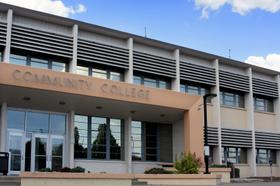Remedial education has become an integral part of the community college experience for many schools across the country. Students who need additional help in the core curricula like reading, writing, and math can get the help they need to succeed in a college program and get a higher-paying job once their degree is complete. However, remedial education is not without its share of controversy in higher education circles. Some question the need for such courses and believe the money spent on remedial education could effectively be allocated elsewhere.
Who Owns the Problem?
The first question regarding remedial education is who owns the problem of high school graduates not being adequately prepared for postsecondary education. Many believe it is the job of high schools to ensure students are college-ready when they graduate. However, a recent report at Inside Higher Ed explains that at this time, a standardized platform for college readiness simply does not exist. The article states, “Because colleges have not clearly articulated the skills that students must possess to be college-ready, students are blindsided when they are placed into remedial courses, and high schools don’t have a clear benchmark for preparing students for success.”
If high schools do not know the college-readiness standards, it can be nearly impossible for them to adequately prepare students for the academic rigors of postsecondary education. While the article's author acknowledges that setting college standards across the country would not be easy, he does assert the






















